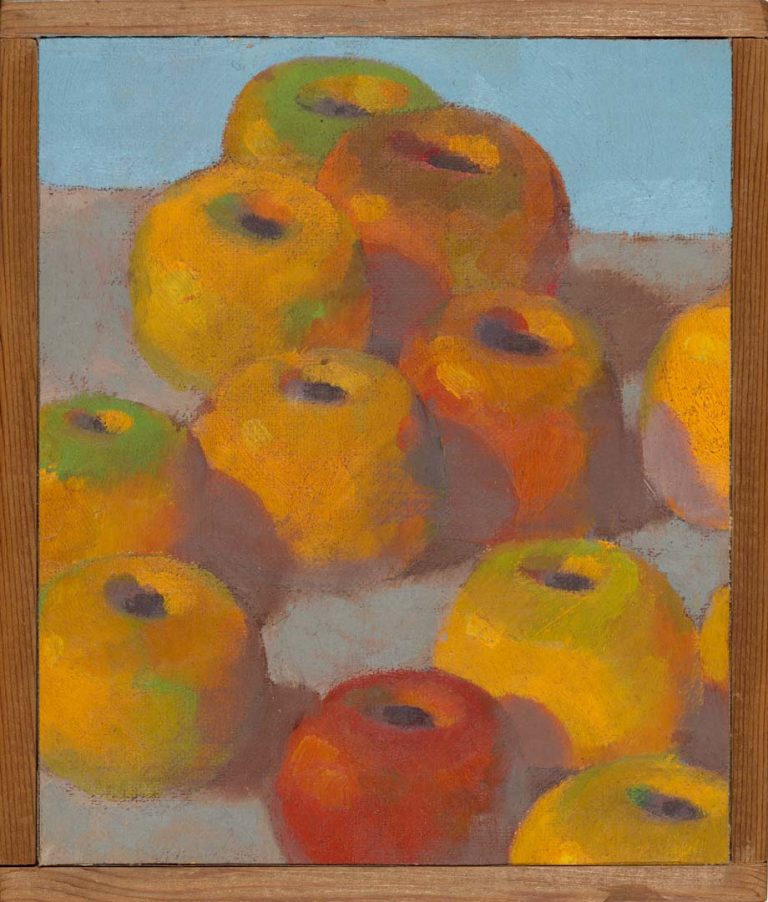We acknowledge the Traditional Owners of the land on which the Queensland Art Gallery | Gallery of Modern Art stands and recognise the creative contribution First Australians make to the art and culture of this country.

Dale Hickey / Australia b.1937 / Apples 1974 / Oil on canvas / 20.7 x 17.4cm / Purchased 2002 with funds from Wayne Kratzmann through the Queensland Art Gallery Foundation / Collection: Queensland Art Gallery | Gallery of Modern Art / © Dale Hickey
Dale HickeyApples 1974
Not Currently on Display
Apples sees Dale Hickey making a contemporary version of a favourite subject of Paul Cézanne. He creates the foreground and background with the use of varying tones of blue. The paint in each of the apple’s forms has been modelled to capture the light through careful colour placement, using a palette consisting of mostly primary colours, red, yellow and blue, with the addition of secondary shades, such as green, highlighting the areas of shadow in each shape.
In the tradition of Cézanne’s apples, Hickey has polarized both the warm and cool colours in the palette and although the application of the paint is not entirely opaque, the flatness of the brush stroke alludes to Cézanne’s handling. Throughout the composition the colour range shifts through from red through to orange with grades of blue to anchor the entire piece.
This small intimate painting protrudes from the wall like a shadow box. By rendering these still life objects as he observes them, and working from the traditions of Cézanne, Hickey presents the apples in a new light, thus allowing the viewer fresh perception of an old subject.
Dale Hickey was born on 31 July 1937 in Melbourne. Between 1954 and 1957 he studied graphic design at the Swinburne Technical College in Melbourne and for the next two years he worked as a graphic artist for ABC television.
From 1969 he began teaching and continued to pursue this profession for the next thirty years, working first in high schools and eventually as a senior lecturer in painting at Phillip Institute of Technology in Melbourne. Hickey went on to become one of the most influential teachers of graphic art in Melbourne.
Hickey is an artist for whom the act of painting is of prime importance. Throughout his continual shifts in style there has been a consistent re-investigation of painting, with later works referencing earlier series, all of which persistently address the subject of painting itself. His practice has encompassed both representational and more abstract styles of painting.